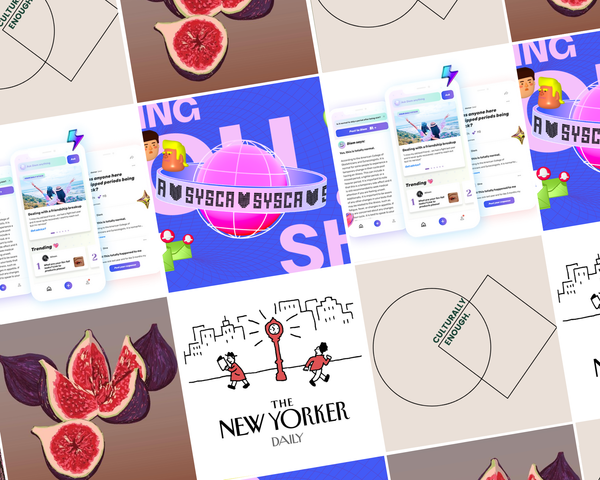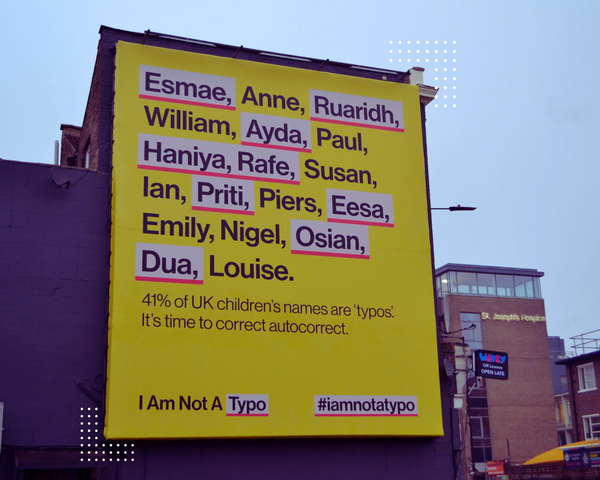The Colour of Madness: Exploring People of Colour’s Experience of Mental Health in the UK
Our interview with Rianna Walcott, co-author of ‘The Colour of Madness: Exploring BAME Mental Health in the UK’.

Access the Audio Read version of this article directly on Spotify for Podcasters.
“I want people to feel empowered to ask for the service they deserve. To know this system of oppression is real, that it happens in the UK, and that there is no need for them to be gaslighted into thinking that they are alone."
This interview was recorded on 7th October 2022. Listen to the full interview on Spotify for Podcasters.
In ‘The Colour of Madness: Exploring BAME Mental Health in the UK’, a ground-breaking collection of memoirs, essays, poetry, short fiction and artwork, Rianna Walcott and Dr Samara Linton share and amplify the voices of people of colour and their experiences with mental health - particularly those who have been touched by medical inequalities in the UK.
The book is unique and refreshing. Its 2018 edition was a first in a publishing industry that failed to share the variety of mental health experiences lived by people of colour in the country. ‘The Colour of Madness’, now in its second edition, is still disrupting the whitewashed narrative of mental health in the UK and the world, but the road has been arduous.
As its Waterstones page explains, Dr Samara Linton and Rianna Walcott ended their relationship with their previous publisher in 2021, when the press was linked to a far-right group. They have since collaborated with new publisher, Bluebird, to present a revised edition complete with more contributions and powerful artwork in 2022.
The book, combining solace, comfort, insights, art, facts and relatable experiences, offers companionship throughout the not-so-linear journey that is mental health - and one that the system makes even harder for people of colour.
Indeed, various statistics show that people from Black and minority ethnic backgrounds in the UK have not only experienced inadequate mental health treatment in comparison to their white counterparts, but they are also more likely to be detained under the Mental Health Act.
Walcott explains that ‘The Colour of Madness’ came from awareness of those statistics, the variation in experience that people in the UK suffer from, as well as Dr Linton’s and her own lived experience of mental ill health. “Samara being a doctor, we were aware of some of the inequalities in the UK’s healthcare system from a practitioner perspective, so it was about straddling this boundary between being a practitioner and a patient, both being university-educated Black women, and understanding that our access to healthcare had been limited, disrupted, made more difficult, by being Black women in predominantly white institutions and spaces,” she explains.
“We were very much guided by our own experiences and the ones of others around us. We have got a broad range of contributors in the book, practitioners with experience within the system, patients, asylum seekers, people who have been detained against their will under the Mental Health Act, and people who had close family members or intimate relationships with people who had mental ill health, so it really is broad and kaleidoscopic of the experiences of the mental health service in the UK.”
Walcott hopes the book will be accessible and picked up by professionals in the health sector as a useful resource, and that readers will easily engage with the book when they need it, based on how the book is structured: chapters ranging from rage to psychosis, mania, and joy (to name a few). Essentially, ‘The Colour of Madness’ makes a point of covering all facets of the human condition, offering a read for every stage of the mental health journey.
Accessibility is key for both authors, with hopes for an audio version and more in the future. “We want to look beyond the neurotypical way of engaging with the materials as well, bearing in mind the community we’ve created this for. We were thinking about accessibility that accommodates people from BAME backgrounds, different class backgrounds, in different mental health conditions. It can’t be something that is inaccessible when you sit down and read it. There’s a reason why we have artwork in the middle, why the poetry can be found in a section and throughout the book, and of vastly different lengths. That is both out of respect to our contributors, to allow them to include exactly what they needed to include to represent them in the way they wanted to be, and out of respect to our readers who might have the capacity for one thing one day, then the capacity for another.”
Its media reviews include Samantha Walton, a lecturer at Bath Spa University, who wrote they had been looking for a book like this one for years for its BA module on Literature and Psychology. Both the academic and healthcare sector are now adopting the book as a resource, which Walcott says has been wonderful news. “It’s been used in NHS libraries, Parliament to talk about policy change, and NHS research studies,” she shares. The very system she and Dr Linton are trying to change.
Walcott hopes that readers will take away something that reflects what they want out of it; that they will find what they look for, whether it’s being soothed or enraged. She wants the book to be “a comfort and a rallying cry”, a text people can relate to, soothing loneliness through the visibility of people with similar experiences. “I want people to feel empowered to ask for the service they deserve, and to know that a lot of these things are not their fault. That this system of oppression is real, that it happens in the UK, and that there is no need for them to be gaslighted into thinking that they are alone and that they have to deal with it alone. Sometimes there is power in having a text you can refer to, in being able to cite existing texts. We’re hoping people can borrow from that power.”
Walcott also makes it clear that activism is not the sole purpose of ‘The Colour of Madness’, and that above all, she really wants people to find the book beautiful. “I think a lot of the art and creative labour of people of colour is sometimes seen purely as advocacy and activist labour, with people ignoring its capacity for beauty at the same time. When I think about certain texts and poetry and prose and the way they’re taught in universities or spoken about years after their publication, you don’t have people commenting quite so much on how lovely and pleasant they were to read, or how beautiful the work was. Instead they’ll talk about what a moment it was, or how moving - it’s positioned in the world in its applicability in social justice systems. I’m not saying I don’t want ‘The Colour of Madness’ to do that, but our contributors deserve more than that. They deserve more than being seen as purely activists. They’re people and artists, and their work is beautiful as well. It stands alone as being beautiful without this application.”
Walcott and Dr Linton were, of course, heavily distressed by the first experience in publishing, and the damage it could have done to the work at stake. “It was absolutely devastating and very difficult to come back from. We were really worried that this would overshadow the work of our contributors.” But they found a new publisher for a longer edition with more publicity around it, a new cover, more contributions and new artwork. And in an unforeseen plot twist, between its first and second editions, the world had changed, with a pandemic and its repercussions forcing more awareness and dialogue around mental health. “I think there were a lot of discussions about mental health and the healthcare system in the UK that really picked up.” Indeed, the system was already overstressed pre-pandemic, but the conversation widened up. There are now more books about the topic and sharing the perspectives of people of colour in the UK, contrary to the early days of ‘The Colour of Madness’. “At the time of 2018, when Samara and I were researching the niche that this book would fall into, we were taken aback that there was nothing like this yet. We couldn’t find anything. That’s a deeply sad thing, but now it is no longer the case.”
For there to be more texts like ‘The Colour of Madness’, Walcott believes there should be less diversity box ticking and generally more support for writers of colour, especially emerging ones from underprivileged backgrounds, without connections in the publishing industry. “There is sometimes a bit of a tendency to play it safe, to think about popularity, and think of social media reach.”
‘The Colour of Madness: Exploring BAME Mental Health in the UK’ is a much needed resource for anyone struggling with their mental health, or interested in how people of colour navigate their mental health while dealing with an oppressive system. It’s a beautiful book that will help you reflect, laugh, cry, enrage you and soothe you, because mental health is an umbrella and will differ from one person to the next, taking a different shape every day.
You can find ‘The Colour of Madness: Exploring BAME Mental Health in the UK’ by Rianna Walcott and Dr Samara Linton (out now, published by Bluebird - Pan Macmillan) on the Pan Macmillian website or other bookstores.
Listen to the full interview with Rianna Walcott on Anchor and Spotify.





